Grey Aliens
Leonard H. Stringfield
From Wikipedia, the free encyclopedia
| Leonard H. Stringfield | |
|---|---|

The cover of Leonard H. Stringfield's 1977 book, Situation Red.
|
|
| Born | 1920 |
| Died | 1994 |
| Occupation | Ufologist |
| Genres | Ufology |
Career
Stringfield was director of Civilian Research, Interplanetary Flying Objects (CRIFO), and published a monthly newsletter, ORBIT. In 1957 he became public relations adviser for the civilian UFO group NICAP under the direction of Donald Keyhoe, a friend of his since 1953. From 1967-1969, Stringfield served as an "Early Warning Coordinator" for the Condon Committee. During the 1970s, he wrote a number of books about alleged recoveries of alien spaceships and alien bodies.In 1978, Stringfield served as UFO research adviser to Grenada Prime Minister Sir Eric Gairy. Privately, Stringfield worked as Director of Public Relations and Marketing Services for DuBois Chemicals, a division of Chemed Corporation, Cincinnati. He self-published "Status Reports" on alleged UFO "crash-retrievals" until his death. He died December 18, 1994 after a long battle with lung cancer.[1]
Associated Organizations
- Civilian Research, Interplanetary Flying Objects (CRIFO)
- National Investigations Committee On Aerial Phenomena (NICAP)
- Mutual UFO Network (MUFON)
- Fund for UFO Research (FUFOR)
- Center for UFO Studies (CUFOS)
- Citizens Against UFO Secrecy (CAUS)
Publications
- Inside Saucer Post...3-0 Blue: CRIFO Views the Status Quo: A Summary Report (1957)
- Situation Red, Fawcett Crest Books 1977 (PB), ISBN 0-449-23654-4
- Retrievals of the Third Kind: A case study of alleged UFOs and occupants in military custody (1978), presented as a speaker at the Ninth Annual MUFON Symposium in Dayton, Ohio, July, 1978. (Unofficially: Status Report I)[2]
- The UFO Crash/Retrieval Syndrome: Status report II: New Sources, New Data (1980)
- UFO Crash/Retrievals: Amassing the Evidence: Status Report III (1982)
- The fatal encounter at Ft. Dix-McGuire: A case study: Status Report IV (1985)
- UFO Crash/Retrievals: Is the coverup lid lifting?: Status Report V (1989)
- UFO Crash/Retrievals: The Inner sanctum : Status Report VI (1991)
- UFO Crash/Retrievals: Search for Proof in a Hall of Mirrors: Status Report VII (1994
Roswell Grey Aliens
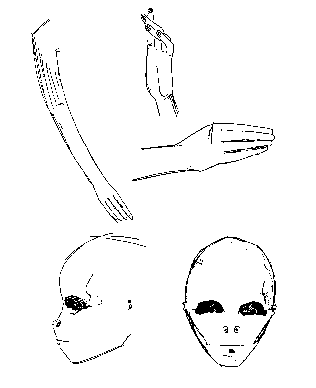
Roswell UFO incident
From Wikipedia, the free encyclopedia
Coordinates: 33.97°N 105.24°W
Roswell Daily Record, July 8, 1947, announcing the "capture" of a "flying saucer."
|
|
| Date | 1947 |
|---|---|
| Location | Chaves County, New Mexico, United States |
The United States Armed Forces maintains that what was recovered near Roswell was debris from the crash of an experimental high-altitude surveillance balloon belonging to what was then a classified (top secret) program named Mogul. In contrast, many UFO proponents maintain that an alien craft was found, its occupants were captured, and that the military engaged in a massive cover-up. The Roswell incident has turned into a widely known pop culture phenomenon, making the name "Roswell" synonymous with UFOs. Roswell has become the most publicized of all alleged UFO incidents.
On July 8, 1947, the Roswell Army Air Field (RAAF) public information officer Walter Haut, issued a press release stating that personnel from the field's 509th Operations Group had recovered a "flying disk", which had crashed on a ranch near Roswell. Later that day, the press reported that Commanding General of the Eighth Air Force Roger Ramey had stated that a weather balloon was recovered by the RAAF personnel. A press conference was held, featuring debris (foil, rubber and wood) said to be from the crashed object, which seemed to confirm its description as a weather balloon.
Subsequently the incident faded from the attention of UFO researchers for over 30 years. In 1978, physicist and ufologist Stanton T. Friedman interviewed Major Jesse Marcel who was involved with the original recovery of the debris in 1947. Marcel expressed his belief that the military covered up the recovery of an alien spacecraft. His story spread through UFO circles, being featured in some UFO documentaries at the time. In February 1980, the National Enquirer ran its own interview with Marcel, garnering national and worldwide attention for the Roswell incident. Additional witnesses added significant new details, including claims of a large-scale military operation dedicated to recovering alien craft and aliens themselves, at as many as 11 crash sites, and alleged witness intimidation. In 1989, former mortician Glenn Dennis put forth a detailed personal account, wherein he claimed alien autopsies were carried out at the Roswell base.
In response to these reports, and after United States congressional inquiries, the General Accounting Office launched an inquiry and directed the Office of the United States Secretary of the Air Force to conduct an internal investigation. The result was summarized in two reports. The first, released in 1995, concluded that the reported recovered material in 1947 was likely debris from Project Mogul. The second report, released in 1997, concluded reports of recovered alien bodies were likely a combination of innocently transformed memories of military accidents involving injured or killed personnel, innocently transformed memories of the recovery of anthropomorphic dummies in military programs like Operation High Dive conducted in the 1950s, and hoaxes perpetrated by various witnesses and UFO proponents. The psychological effects of time compression and confusion about when events occurred explained the discrepancy with the years in question. These reports were dismissed by UFO proponents as being either disinformation or simply implausible. But at the same time, several high-profile UFO researchers discounted the possibility that the incident had anything to do with aliens.
Contents
- 1 Contemporary accounts
- 2 Witnesses
- 3 Air Force and skeptics respond
- 4 Developments since 1990s
- 5 See also
- 6 Notes
- 7 References
- 8 External links
Contemporary accounts
Wilcox called RAAF Major Jesse Marcel and a "man in plainclothes" accompanied Brazel back to the ranch where more pieces were picked up. "[We] spent a couple of hours Monday afternoon [July 7] looking for any more parts of the weather device", said Marcel. "We found a few more patches of tinfoil and rubber."[6]
As described in the July 9, 1947 edition of the Roswell Daily Record,
The balloon which held it up, if that was how it worked, must have been 12 feet long, [Brazel] felt, measuring the distance by the size of the room in which he sat. The rubber was smoky gray in color and scattered over an area about 200 yards in diameter. When the debris was gathered up, the tinfoil, paper, tape, and sticks made a bundle about three feet long and 7 or 8 inches thick, while the rubber made a bundle about 18 or 20 inches long and about 8 inches thick. In all, he estimated, the entire lot would have weighed maybe five pounds. There was no sign of any metal in the area which might have been used for an engine, and no sign of any propellers of any kind, although at least one paper fin had been glued onto some of the tinfoil. There were no words to be found anywhere on the instrument, although there were letters on some of the parts. Considerable Scotch tape and some tape with flowers printed upon it had been used in the construction. No strings or wires were to be found but there were some eyelets in the paper to indicate that some sort of attachment may have been used.[7]A telex sent to an Federal Bureau of Investigation (FBI) office from the Fort Worth, Texas office quoted a Major from the Eighth Air Force (also based in Fort Worth at Carswell Air Force Base) on July 8, 1947 as saying that "The disc is hexagonal in shape and was suspended from a ballon [sic] by cable, which ballon [sic] was approximately twenty feet in diameter. Major Curtan further advices that the object found resembles a high altitude weather balloon with a radar reflector, but that telephonic conversation between their office and Wright field had not [UNINTELLIGIBLE] borne out this belief."[8]
The many rumors regarding the flying disc became a reality yesterday when the intelligence office of the 509th Bomb group of the Eighth Air Force, Roswell Army Air Field, was fortunate enough to gain possession of a disc through the cooperation of one of the local ranchers and the sheriff's office of Chaves County. The flying object landed on a ranch near Roswell sometime last week. Not having phone facilities, the rancher stored the disc until such time as he was able to contact the sheriff's office, who in turn notified Maj. Jesse A. Marcel of the 509th Bomb Group Intelligence Office. Action was immediately taken and the disc was picked up at the rancher's home. It was inspected at the Roswell Army Air Field and subsequently loaned by Major Marcel to higher headquarters.[10]Colonel William H. Blanchard, commanding officer of the 509th, contacted General Roger M. Ramey of the Eighth Air Force in Fort Worth, Texas, and Ramey ordered the object be flown to Fort Worth Army Air Field. At the base, Warrant Officer Irving Newton confirmed Ramey’s preliminary opinion, identifying the object as being a weather balloon and its "kite,"[5] a nickname for a radar reflector used to track the balloons from the ground. Another news release was issued, this time from the Fort Worth base, describing the object as being a "weather balloon".
Witnesses
Witness accounts, emergence of alien narratives
In 1978, nuclear physicist and author Stanton T. Friedman interviewed Jesse Marcel, the only person known to have accompanied the Roswell debris from where it was recovered to Fort Worth where reporters saw material which was claimed to be part of the recovered object. The accounts given by Friedman and others in the following years elevated Roswell from a forgotten incident to perhaps the most famous UFO case of all time.[11] By the early 1990s, UFO researchers such as Friedman, William Moore, Karl T. Pflock, and the team of Kevin D. Randle and Donald R. Schmitt interviewed several hundred people who had—or claimed to have had—a connection with the events at Roswell in 1947.[12] Additionally, hundreds of documents were obtained via Freedom of Information Act requests, and some were supposedly leaked by insiders, such as the so-called Majestic 12 papers. Their conclusions were at least one alien craft had crashed in the Roswell vicinity, aliens—some possibly still alive—were recovered, and a massive cover-up of any knowledge of the incident was put in place.[11]Over the years, books, articles, television specials, and a made-for-TV movie brought the 1947 incident significant notoriety.[11] By the mid-1990s, public polls such as a 1997 CNN/Time poll, revealed that the majority of people interviewed believed that aliens had indeed visited Earth, and that aliens had landed at Roswell, but that all the relevant information was being kept secret by the US government.[13]
Various narratives evolved, starting with Friedman's 1978 interviews with Marcel, through publication of the first book on Roswell in 1980, to new accounts and new books appearing into the early 1990s. Many new witnesses had by then emerged, as had new accounts that detailed recoveries of alien corpses and alien autopsies.[11] Skeptics such as Phillip Klass and Richard Todd published objections to the plausibility of these accounts, but it was not until 1994 and the publication of the first United States Air Force report on the incident, that a strong counter-argument to the presence of aliens was widely publicized.[11] Various authors enumerated different alien scenarios which often contradicted each other, based on what the documentary evidence suggested and on which witness accounts were accepted or dismissed. This was especially true for the various claimed sites for the crash and recovery sites of alien craft (various authors had different witnesses who described different locations for these events).[11]
The outline from UFO Crash at Roswell (1991) by Randle and Schmitt is common to many of these accounts:
A UFO crashed northwest of Roswell, New Mexico, in the summer of 1947. The military acted quickly and efficiently to recover the debris after its existence was reported by a ranch hand. The debris, unlike anything these highly trained men had ever seen, was flown without delay to at least three government installations. A cover story was concocted to explain away the debris and the flurry of activity. It was explained that a weather balloon, one with a new radiosonde target device, had been found and temporarily confused the personnel of the 509th Bomb Group. Government officials took reporters' notes from their desks and warned a radio reporter not to play a recorded interview with the ranch hand. The men who took part in the recovery were told never to talk about the incident. And with a whimper, not a bang, the Roswell event faded quickly from public view and press scrutiny.[14]
The Roswell Incident (1980)
The first book on the Roswell UFO incident was The Roswell Incident (1980) by Charles Berlitz and William Moore. The authors claimed to have interviewed over ninety witnesses. Though he was uncredited, Friedman carried out some research for the book.[15] The Roswell Incident featured accounts of debris described by Marcel as "nothing made on this earth."[16] Additional accounts by Bill Brazel,[17] son of Mac Brazel, neighbor Floyd Proctor[18] and Walt Whitman Jr.,[19] son of newsman W. E. Whitman who had interviewed Mac Brazel, suggested the material Marcel recovered had super-strength not associated with a weather balloon. The book introduced the contention that debris which was recovered by Marcel at the Foster ranch, visible in photographs showing Marcel posing with the debris, was substituted for debris from a weather device as part of a cover-up.[20][21] The book also claimed that the debris recovered from the ranch was not permitted a close inspection by the press. The efforts by the military were described as being intended to discredit and "counteract the growing hysteria towards flying saucers".[22] Two accounts[23] of witness intimidation were included in the book, including the incarceration of Mac Brazel.[24]The book included a report of Roswell residents Dan Wilmot and his wife seeing "two inverted saucers faced mouth to mouth" passing overhead on July 2,[25] as were other reports of mysterious objects seen flying overhead.[26] The Roswell Incident introduced an alien account by Socorro, New Mexico resident Barney Barnett, who had died years earlier. Friends of Barnett said he described the crash of a flying saucer and the recovery of alien corpses in the vicinity of Socorro, about 150 miles (240 km) west of the Foster ranch. He and a group of archaeologists stumbled upon an alien craft, and its occupants on the morning of July 3, only to be led away by military personnel.[27] Further accounts suggested that the aliens and the craft were transported to Edwards Air Force Base in California.[28] The book suggested that either there were two crafts that crashed, or that debris from the vehicle Barnett described had subsequently landed on the Foster ranch after an explosion.[27]
Marcel said he "heard about it on July 7"[29] when the sheriff Brazel had called him, but said, "[On] Sunday, July 6, Brazel decided he had better go into town and report this to someone," and that Brazel in turn called Marcel, suggesting—though not stating that Marcel was contacted on July 6.[30] In 1947, Marcel was quoted as saying that he visited the ranch on Monday, July 7.[6] Marcel described returning to Roswell the evening of July 7 to find that news of the incident had been leaked. Calls were made to Marcel's house, and he had a visit from a reporter, but he would not confirm the reports to the press. "The next morning, that written press release went out, and after that things really hit the fan."[31] The book suggested that the military orchestrated Brazel's testimony in order to make it appear that a mundane object had crash landed on the ranch. "Brazel [...] [went] to great pains to tell the newspaper people exactly what the Air Force had instructed him to say regarding how he had come to discover the wreckage and what it looked like [...]".[32]
UFO Crash at Roswell (1991)
In 1991, with the benefit of publicity from new witness interviews, Kevin Randle and Donald Schmitt published UFO Crash at Roswell. In this account, the timelines of the incident were slightly altered. The date when Brazel reported the debris and Marcel went to the ranch was said to be Sunday, July 6, not the next day, as some of the original accounts suggested, and The Roswell Incident left unclear. Marcel and an unidentified counter-intelligence agent were said to have spent the night at the ranch. The two gathered material on Monday, then Marcel supposedly dropped by his house on the way to the Roswell base in the early hours of Tuesday, July 8.[33]Some new details emerged, including accounts of a "gouge [...] that extended four or five hundred feet" at the ranch[34] and descriptions of an elaborate cordon and recovery operation. Several witnesses in The Roswell Incident described being turned back from the Foster ranch by armed military police, but extensive descriptions were not given.[citation needed] The Barnett accounts were mentioned, though the dates and locations were changed from the accounts found in The Roswell Incident. In the new account, Brazel was described as leading the Army to a second crash site on the ranch, at which point the Army personnel were supposedly "horrified to find civilians [including Barnett] there already."[35]
Glenn Dennis had emerged as an important witness in 1989, after calling the hotline when an episode of Unsolved Mysteries featured the Roswell incident. His descriptions of Roswell alien autopsies were the first account that said there were alien corpses at the Roswell Army Air Base.[11] No mention, except in passing, was made of the claim found in The Roswell Incident that the Roswell aliens and the craft were shipped to Edwards Air Force Base. The 1991 book purported to establish a chain of events with alien corpses being seen at a crash site, the bodies then being shipped to the Roswell base as witnessed by Dennis, and then flown to Fort Worth, and finally to Wright Field in Dayton, Ohio, the last known location of the bodies.[citation needed]
The book introduced an account from General Arthur E. Exon, an officer stationed at the alleged final resting place of the recovered material. He stated there was a shadowy group, which he called the "Unholy Thirteen", who controlled and had access to whatever was recovered.[36] He later stated:
In the '55 time period [when Exon was at the Pentagon], there was also the story that whatever happened, whatever was found at Roswell was still closely held and probably would be held until these fellows I mentioned had died so they wouldn't be embarrassed or they wouldn't have to explain why they covered it up. [...] [U]ntil the original thirteen died off and I don't think anyone is going to release anything [until] the last one's gone.[37]
Crash at Corona (1992)
In 1992, a third book, Crash at Corona, was published. Written by Friedman and Don Berliner, it suggested a high-level cover-up of a UFO recovery, based on documents which were anonymously dropped off at a UFO researcher's house in 1984. The documents were purported to be 1952 briefing papers for incoming president Dwight Eisenhower, describing a high-level government agency whose purpose was to investigate aliens recovered at Roswell and to keep such information hidden from public view. Friedman had done much of the research for The Roswell Incident with William Moore, and Crash at Corona built on this research.The title of the book was Corona, New Mexico rather than Roswell, New Mexico, because Corona is geographically closer to the Foster ranch crash site.[38] The timeline of events that the book gives is the same as the previous account, with Marcel and Sheridan Cavitt, a counter-intelligence agent who was likely the "man in plainclothes" described by Brazel in 1947, visiting the ranch on July 6. The 1992 book says, however, that Brazel was "taken into custody for about a week" and escorted into the offices of the Roswell Daily Record on July 10, where he gave an account that he had been told to give by the government.[39]
A sign of the disagreements between various researchers is evident, as Friedman and Berliner moved the Barnett account back to near Socorro and introduced a new eyewitness account of the site. This new account is from Gerald Anderson who provided vivid descriptions of both a downed alien craft and four aliens, of which at least one was alive.[40] The authors note much of the evidence had been dismissed by the authors of UFO Crash at Roswell and that this had been done "without a solid basis".[41] The 1992 authors also mention "a personality conflict between Anderson and Randle" meaning that Friedman was the author who investigated his claim.[42] The book, however, does largely embrace the same sequence of events as the account in UFO Crash at Roswell, where aliens are seen at the Roswell Army Air Field, based on the Dennis account, and then shipped off to Fort Worth, and subsequently to Wright Field. The book suggests that as many as eight alien corpses were recovered from two crash sites: three dead and perhaps one alive from the Foster ranch, and three dead and one living from the Socorro site.[43]
The Truth about the UFO Crash at Roswell (1994)
In 1994, Randle and Schmitt published The Truth about the UFO Crash at Roswell. While it restated a majority of the case as laid out in their earlier book, new and expanded accounts of aliens were included, and a new location for the recovery of aliens was detailed. Additionally, an almost completely new scenario for the sequence of events was laid out. For the first time, the airborne object was said to have crashed on the evening of July 4 instead of July 2, which was the date used in all the previous books. Another important difference was the assertion that the alien recovery was well under way before Brazel traveled to Roswell with his news about the debris on the Foster ranch. Apparently several objects had been tracked by radar for a few days in the vicinity before one crashed. In all previous accounts, the military was made aware of the alleged alien crash only when Brazel came forward. Additionally, Brazel was said to have given his news conference on July 9, and the 1994 book claims that his press conference and the initial news release announcing the discovery of a "flying disk" were all part of an elaborate ruse to shift attention away from the "true" crash site.[citation needed]The book featured a new witness account describing an alien craft and aliens from Jim Ragsdale,[who?] at a new location north of Roswell, instead of closer to Corona on the Foster ranch. Corroboration was given by accounts from a group of archaeologists. Five alien corpses were supposedly seen.[44] The book states that although the Foster ranch was also a source of debris, no bodies were recovered from it. The book also features expanded accounts from Dennis and Kaufmann, and a new account from Ruben Anaya which describes New Mexico Lieutenant Governor Joseph Montoya's claim that he saw alien corpses at the Roswell base.[citation needed]
More disagreement between Roswell researchers forms part of the book. A full chapter is devoted to dismissing the Barnett and Anderson accounts from Socorro, a central part of Crash at Corona and The Roswell Incident. "[...] Barnett's story [and] the Plains [of San Augustin, near Soccoro] scenario, must be discarded", say the authors.[45] An appendix is devoted to describing Majestic 12 as a hoax.[46] The two Randle and Schmitt books remain highly influential in the UFO community; their interviews and conclusions widely reproduced on websites.[47] Randle and Schmitt claimed to have "conducted more than two thousand interviews with more than five hundred people" during their Roswell investigations.[37]
UFO community schism
By 1994 when The Truth About the UFO Crash at Roswell was published, a schism had emerged within the UFO community about the events in the Roswell UFO incident.[48] The Center for UFO Studies (CUFOS) and the Mutual UFO Network (MUFON), two leading UFO societies, disagreed in their views of the various scenarios presented by Randle–Schmitt and Friedman–Berliner; several conferences were held to try to resolve the differences. One of the center issues under discussion was where Barnett was when he saw the alien craft he was said to have encountered. A 1992 UFO conference attempted to achieve a consensus among the various scenarios portrayed in Crash at Corona and UFO Crash at Roswell, however, the publication of The Truth About the UFO Crash at Roswell had "resolved" the Barnett problem by simply ignoring Barnett and citing a new location for the alien craft recovery, including a new group of archaeologists not connected to the ones the Barnett story cited.[48]Alien autopsy footage
In 1995, film footage purporting to show an alien autopsy and claimed to have been taken by a US military official shortly after the Roswell incident was released by Ray Santilli, a London-based video entrepreneur. The footage caused an international sensation when it aired on television networks around the world.[49]In 2006, Santilli admitted that the film was mostly a reconstruction, but continued to claim it was based on genuine footage now lost, and some original frames that had survived. A fictionalized version of the creation of the footage and its release was retold in the comedy film Alien Autopsy (2006).[50][51]
Air Force and skeptics respond
Air Force reports
Main article: Air Force reports on the Roswell UFO incident
During the mid-1990s, the United States Air Force
issued two reports which accounted for the debris that was found and
reported on in 1947, and which also accounted for the later reports of
alien recoveries. The USAF reports identified the debris as coming from a
top-secret government experiment called Project Mogul, which tested the feasibility of detecting Soviet nuclear tests and ballistic missiles
with equipment that was carried aloft using high-altitude balloons.
Accounts of aliens were explained as resulting from misidentified
military experiments that used anthropomorphic dummies, accidents
involving injured or killed military personnel, and hoaxes perpetrated
by various witnesses and UFO proponents.[citation needed]
The Air Force report formed a basis for a skeptical response to the
claims many authors were making about the recovery of aliens, though
skeptical researchers such as Philip J. Klass[49]
and Robert Todd had already been publishing articles for several years
that raised significant doubts about the accounts of aliens in the
incident.Books published into the 1990s suggested there was much more to the Roswell incident than the mere recovery of a weather balloon, however, skeptics, and even some social anthropologists[52] saw the increasingly elaborate accounts as evidence of a myth being constructed. After the release of the Air Force reports, several books, such as Kal Korff's The Roswell UFO Crash: What They Don't Want You To Know (1997), built on the evidence presented in the reports to conclude "there is no credible evidence that the remains of an extraterrestrial spacecraft was involved."[12]
Problems with witness accounts
Hundreds of people were interviewed by the various researchers, but critics point out that only a few of these people claimed to have seen debris or aliens. Most witnesses were repeating the claims of others, and their testimony would be considered hearsay in an American court of law and therefore inadmissible as evidence. Of the 90 people claimed to have been interviewed for The Roswell Incident, the testimony of only 25 appears in the book, and only seven of these people saw the debris. Of these, five handled the debris.[53] Pflock, in Roswell: Inconvenient Facts and the Will to Believe (2001), makes a similar point about Randle and Schmitt's UFO Crash at Roswell. Approximately 271 people are listed in the book who were "contacted and interviewed" for the book, and this number does not include those who chose to remain anonymous, meaning more than 300 witnesses were interviewed, a figure Pflock said the authors frequently cited.[54] Of these 300-plus individuals, only 41 can be "considered genuine first- or second-hand witnesses to the events in and around Roswell or at the Fort Worth Army Air Field," and only 23 can be "reasonably thought to have seen physical evidence, debris recovered from the Foster Ranch." Of these, only seven have asserted anything suggestive of otherworldly origins for the debris.[54]As for the accounts from those who claimed to have seen aliens, critics identified problems ranging from the reliability of second-hand accounts, to credibility problems with witnesses making demonstrably false claims, or multiple, contradictory accounts, to dubious death-bed confessions or accounts from elderly and easily confused witnesses.[55][56][57] Pflock noted that only four people with supposed firsthand knowledge of alien bodies were interviewed and identified by Roswell authors: Frank Kaufmann; Jim Ragsdale; Lt. Col. Albert Lovejoy Duran; Gerald Anderson.[58] Duran is mentioned in a brief footnote in The Truth About the UFO Crash at Roswell and never again, while the other three all have serious credibility problems. A problem with all the accounts, charge critics, is they all came about a minimum of 31 years after the events in question, and in many cases were recounted more than 40 years after the fact. Not only are memories this old of dubious reliability, they were also subject to contamination from other accounts the interviewees may have been exposed to.[11] The shifting claims of Jesse Marcel, whose suspicion that what he recovered in 1947 was "not of this world" sparked interest in the incident in the first place, cast serious doubt on the reliability of what he claimed to be true.
In The Roswell Incident, Marcel stated, "Actually, this material may have looked like tinfoil and balsa wood, but the resemblance ended there [...] They took one picture of me on the floor holding up some of the less-interesting metallic debris [...] The stuff in that one photo was pieces of the actual stuff we found. It was not a staged photo."[59] Timothy Printy points out that the material Marcel positively identified as being part of what he recovered is material that skeptics and UFO advocates agree is debris from a balloon device.[8] After that fact was pointed out to him, Marcel changed his story to say that that material was not what he recovered.[8] Skeptics like Robert Todd argued that Marcel had a history of embellishment and exaggeration, such as claiming to have been a pilot and having received five Air Medals for shooting down enemy planes, claims that were all found to be false, and skeptics feel that his evolving Roswell story was simply another instance of this tendency to fabricate.[60]
Contradictory conclusions, questionable research, Roswell as a myth
Critics[who?] also point out that the large variety of claimed crash flights suggests that events that spanned years have been incorporated into one single event,[11] and that authors[who?] have uncritically embraced anything that suggests aliens, even when the accounts contradict each other. Pflock said, "[T]he case for Roswell is a classic example of the triumph of quantity over quality. The advocates of the crashed-saucer tale [...] simply shovel everything that seems to support their view into the box marked 'Evidence' and say, 'See? Look at all this stuff. We must be right.' Never mind the contradictions. Never mind the lack of independent supporting fact. Never mind the blatant absurdities."[61] Korff suggests there are clear incentives for some people to promote the idea of aliens at Roswell, and that many researchers were not doing competent work: "[The] UFO field is comprised of people who are willing to take advantage of the gullibility of others, especially the paying public. Let's not pull any punches here: The Roswell UFO myth has been very good business for UFO groups, publishers, for Hollywood, the town of Roswell, the media, and UFOlogy [...] [The] number of researchers who employ science and its disciplined methodology is appallingly small."[62]Gildenberg and others[who?] said there were as many as 11 reported alien recovery sites[11] and these recoveries bore only a marginal resemblance to the event as initially reported in 1947, or as recounted later by the initial witnesses. Some of these new accounts could have been confused accounts of the several known recoveries of injured and dead servicemen from four military plane crashes that occurred in the area from 1948 to 1950.[63] Other accounts could have been based on memories of recoveries of test dummies, as suggested by the Air Force in their reports. Charles Ziegler argued that the Roswell story has all the hallmarks of a traditional folk narrative. He identified six distinct narratives, and a process of transmission via storytellers with a core story that was created from various witness accounts, and was then shaped and molded by those who carry on the UFO community's tradition. Other "witnesses" were then sought out to expand the core narrative, with those who give accounts not in line with the core beliefs being repudiated or simply omitted by the "gatekeepers."[64][65] Others then retold the narrative in its new form. This whole process would repeat over time.
Finally, critics have expressed profound frustration at the very notion that crashed saucers have been, as often claimed, repeatedly recovered—in the United States, U.S.S.R., Germany, and Iran, reportedly.
Roswellian Syndrome
Prominent skeptics Joe Nickell and co-author James McGaha identified the myth-making process, which they called the "Roswellian Syndrome".[66] The authors used the Roswell event as an example, but pointed out that the same syndrome is readily observable in other reported UFO incidents. The authors identified five distinct stages of development of the Roswell myth:Incident: The initial incident and reporting on July 8, 1947
Debunking: Soon after the initial reports, the mysterious object was identified as a weather balloon, later confirmed to be a balloon array from Project Mogul which had gone missing in flight.
Submergence: The news story ended with the identification of the weather balloon. However, the event lingered on in the ‘fading and recreative memories of some of those involved’. Rumor and speculation simmered just below the surface in Roswell and became part of the culture at large. In time, UFOlogists arrived, asked leading questions, and helped to spin a tale of crashed flying saucers and a government conspiracy to cover up the true nature of the event.
Mythologizing: After the story submerged, and, over time, reemerged, it developed into an ever-expanding and elaborate myth. The mythologizing process included exaggeration, faulty memory, folklore and deliberate hoaxing. The deliberate hoaxing was usually self-serving for personal gain or promotion (for example, the promotion of the 1950 sci-fi movie The Flying Saucer) and in turn fed the folklore.
Reemergence and Media Bandwagon Effect: Publication of books such as The Roswell Incident by Berlitz and Moore in 1980, television shows and other media coverage perpetuated the UFO crash story and cover-up conspiracy beliefs. Conspiracy beliefs typically mirror public sentiments towards the US government and oscillate along with those attitudes.
The authors predicted that the Roswellian Syndrome would "play out again and again",[66] not only in the Roswell story, but also in other UFO and conspiracy-theory stories.
Developments since 1990s
Pro-UFO advocates dismiss Roswell incident
One of the immediate outcomes of the Air Force reports on the Roswell UFO incident was the decision by some prominent UFO researchers to view the Roswell incident as not involving an alien craft. While the initial Air Force report was a chief reason for this, another reason was the release of secret documents from 1948 that showed that top Air Force officials did not know what the UFO objects being reported in the media were, and their suspicion that the UFOs might be Soviet spy vehicles.In January 1997, Karl T. Pflock, one of the more prominent pro-UFO researchers, said “Based on my research and that of others, I'm as certain as it's possible to be without absolute proof that no flying saucer or saucers crashed in the general vicinity of Roswell or on the Plains of San Agustin in 1947. The debris found by Mac Brazel...was the remains of something very earthly, all but certainly something from the Top Secret Project Mogul....The formerly highly classified record of correspondence and discussions among top Air Force officials who were responsible for cracking the flying saucer mystery from the mid-1940s through the early 1950s makes it crystal clear that they didn't have any crashed saucer wreckage or bodies of saucer crews, but they were desperate to have such evidence [...]"[67]
Kent Jeffrey, who organized petitions to ask President Bill Clinton to issue an Executive order to declassify any government information on the Roswell incident, similarly concluded that no aliens were likely to have been involved.[68][69]
William L. Moore, one of the earliest proponents of the Roswell incident as a UFO event, said this in 1997: "After deep and careful consideration of recent developments concerning Roswell...I am no longer of the opinion that the extraterrestrial explanation is the best explanation for this event." Moore was co-author of the first book on Roswell, The Roswell Incident.[70]
In a podcast interview with Canadian filmmaker Paul Kimball released on August 25, 2013, Kevin Randle stated that while he still personally believed that an extraterrestrial spacecraft crashed in New Mexico, the evidence does not support that conclusion beyond a reasonable doubt. "We really can't get to the extraterrestrial," stated Randle. "We can eliminate practically everything else that you care to mention, but that still doesn't get us to the extraterrestrial."[71]
Shoddy research revealed; witnesses suspected of hoaxes
Around the same time in the late 1990s, a serious rift developed between two prominent Roswell authors. Kevin D. Randle and Donald R. Schmitt had co-authored several books on the subject, and were generally acknowledged, along with Stanton Friedman, to be the leading researchers of the Roswell incident.[47] The Air Force reports on the incident suggested that basic research that was claimed to have been carried out was not in fact carried out,[72] a fact verified in a 1995 Omni magazine article.[73] Additionally, Schmitt claimed he had a bachelor's degree, a master's degree and was in the midst of pursuing a doctorate in criminology. He also claimed to be a medical illustrator. When checked, it was revealed he was in fact a letter carrier in Hartford, Wisconsin, and had no known academic credentials. At the same time, Randle publicly distanced himself from Schmitt and his research. Referring to Schmitt’s investigation of witness Dennis’s accounts of a missing nurse at the Roswell base, he said: "The search for the nurses proves that he [Schmitt] will lie about anything. He will lie to anyone ... He has revealed himself as a pathological liar [...] I will have nothing more to do with him."[47]Additionally, several prominent witnesses were shown to be perpetrating hoaxes, or suspected of doing so. Frank Kaufmann was a major source of alien reports in the 1994 Randle and Schmitt book The Truth About the UFO Crash at Roswell. He was the witness whose testimony it was charged was “ignored” by the Air Force when compiling their reports.[74] However, after his 2001 death, he was shown to have been forging documents and inflating his role at Roswell. Randle and Mark Rodeigher repudiated Kaufmann’s credibility in two 2002 articles.[75]
Glenn Dennis, who testified that Roswell alien autopsies were carried out at the Roswell base, and that he and others were the subjects of threats, was deemed one of the “least credible” Roswell witnesses by Randle in 1998. In Randle and Schmitt’s 1991 book UFO Crash at Roswell, Dennis’s story was featured prominently. Randle said Dennis was not credible “for changing the name of the nurse once we had proved she didn't exist.”[76] Dennis’s accounts were also doubted by researcher Pflock.[67]
Photo analysis; documentaries; new claims
UFO researcher David Rudiak, and others before him, claimed that a telegram which appears in one of the 1947 photos of balloon debris in Ramey's office contains text that confirms that aliens and a "disk" were found. Rudiak and some other examiners claim that when enlarged, the text on the paper General Ramey is apparently holding in his hand includes key phrases "the victims of the wreck" and "in/on the 'disc'" plus other phrases seemingly in the context of a crashed vehicle recovery.[77] However, pro-UFO interpretations of this document are disputed by other photoanalyses, such as one facilitated by researcher James Houran, Ph.D.,[78] which suggest that the letters and words are indistinct. Other objections question the plausibility of a general allowing himself to be photographed holding such a document, raise issues with the format of the memo, and ponder the logic of Ramey having in his possession a document he, as Rudiak argued, has supposedly sent, which says "...the wreck you forwarded..." and yet is supposedly addressed to the Headquarters of the Army Air Force in Washington, not the Roswell Army Air Field.[79]In 2002, the Sci-Fi Channel sponsored an excavation at the Brazel site, in the hopes of uncovering debris that the military failed to collect. Although these results have so far been negative, the University of New Mexico archaeological team did verify recent soil disruption at the exact location that some witnesses said they saw a long, linear impact groove. Gov. Bill Richardson of New Mexico, who headed the United States Department of Energy under President Clinton, apparently found the results provocative. In 2004, he wrote in a foreword to The Roswell Dig Diaries, that "the mystery surrounding this crash has never been adequately explained—not by independent investigators, and not by the U.S. government."
On October 26, 2007, Richardson (who at the time was a candidate for the Democratic Party nomination for U.S. President) was asked about releasing government files on Roswell. Richardson responded that when he was a Congressman, he attempted to get information on behalf of his New Mexico constituents, but was told by both the Department of Defense and Los Alamos Labs that the information was classified. "That ticked me off," he said "The government doesn't tell the truth as much as it should on a lot of issues." He promised to work on opening the files if he were elected as President.[80]
In October 2002, before airing its Roswell documentary, the Sci-Fi Channel hosted a Washington UFO news conference. John Podesta, President Clinton's chief of staff, appeared as a member of the public relations firm hired by Sci-Fi to help get the government to open up documents on the subject. Podesta stated, "It is time for the government to declassify records that are more than 25 years old and to provide scientists with data that will assist in determining the true nature of the phenomena."[81]
In February 2005, the ABC TV network aired a UFO special hosted by news anchor Peter Jennings. Jennings lambasted the Roswell case as a "myth ... without a shred of evidence." ABC endorsed the Air Force's explanation that the incident resulted solely from the crash of a Project Mogul balloon.[citation needed]
Top Secret/Majic (2005 edition)
Stanton T. Friedman continues to defend his view that the Majestic 12 (also known as Majic-12) documents, which describe a secret government agency hiding information on recovered aliens, are authentic. In an afterword dated April 2005 to a new edition of his book Top Secret/Majic (first published in 1996), he responds to more recent questions on their validity and concludes "I am still convinced Roswell really happened, [and] that the Eisenhower Briefing Document [i.e., Majestic 12] ... [and others] are the most important classified documents ever leaked to the public."[82]Witness to Roswell (2007)
In June 2007, Donald Schmitt and his investigation partner Tom Carey published their first book together, Witness to Roswell.[83] In this book, they claim a "continuously growing roster of more than 600 people directly or indirectly associated with the events at Roswell who support the first account - that initial claim of the flying saucer recovery."[84] New accounts of aliens or alien recoveries were described, including the account of Walter Haut, who wrote the initial press release in 1947.A new date was suggested for the crash of a mysterious object—the evening of Thursday, July 3, 1947.[85][86] Also, unlike previous accounts, Brazel took the debris to Corona, where he showed fragments to local residents in the local bar, hardware store, and elsewhere, and to Capitan to the south, where portions of the object ended up at a 4th of July rodeo.[87] Numerous people are described as visiting the debris field and taking souvenirs before Brazel finally went to Roswell to report the find on July 6. Once the military was alerted to the debris, extensive efforts were undertaken to retrieve those souvenirs: "Ranch houses were and [sic] ransacked. The wooden floors of livestock sheds were pried loose plank by plank and underground cold storage fruit cellars were emptied of all their contents."[88]
The subsequent events are related as per the sequence in previous books, except for a second recovery site of an alien body at the Foster ranch. This recovery near the debris field is the same site mentioned in 1991's UFO Crash at Roswell. The authors suggest that Brazel discovered the second site some days after finding the debris field, and this prompted him to travel to Roswell and report his find to the authorities.
Neither Barnett nor the archaeologists are reported to be present at this body site. While noting the earlier "major problems" with Barnett's account, which caused Schmitt and previous partner Randle to omit Barnett's claim in 1994's The Truth about the UFO Crash at Roswell, the new book further notes another site mentioned in the 1994 publication. This site closer to Roswell "turned out to be bogus, as it was based upon the testimony of a single, alleged eyewitness [Frank Kaufmann] who himself was later discovered to have been a purveyor of false information."[89] Jim Ragsdale, whose alien account opened that book and who was claimed to have been present along with some archaeologists, is not mentioned in the new book.
The 2007 book includes claims that Major Marcel saw alien bodies, a claim not present in previous books. Two witnesses are cited who say Marcel briefly mentioned seeing bodies, one a relative and another a Tech Sergeant who worked with Marcel's intelligence team.[90]
Much additional new testimony is presented to support notions that alien bodies were found at the Foster ranch and at another main crash site along with a craft, then processed at the base in a hangar and at the hospital, and the bodies finally flown out in containers, all under very tight security. The book suggests Brazel found "two or three alien bodies" about two miles east of the debris field, and describes the rest of a stricken alien craft along with the remainder of the crew remaining airborne for some 30 more miles before crashing at another site about 40 miles north/northwest of Roswell (but not the same site described by Kaufmann). The authors claim to have located this final crash site in 2005 where "an additional two or three dead aliens and one live one were discovered by civilian archaeologists," but offer no more information about the new site.[91]
Walter Haut, the Roswell Army Air Field public affairs officer, had drafted the initial press release which went out over the news wires on the afternoon of July 8, 1947, announcing a "flying disc". This was supposedly the only direct involvement Haut had in public statements and signed affidavits. The book presents a new affidavit that Haut signed in 2002 in which he claims much greater personal knowledge and involvement, including seeing alien corpses and craft, and involvement in a cover-up. Haut died in 2005.[92]
Another new firsthand account from MP Elias Benjamin describes how he guarded aliens on gurneys taken to the Roswell base hospital from the same hangar.[93] Similarly, family members of Miriam Bush, secretary to the chief medical officer at Roswell base, told of having been led into an examination room where alien corpses were laid out on gurneys.[94] In both accounts, one of the aliens was said to be still alive. The book also recounted earlier testimony of the Anaya family about picking up New Mexico Lt. Governor Joseph Montoya at the base, and a badly shaken Montoya relating that he saw four alien bodies at the base hangar, one of them alive.[95] Benjamin's and Bush's accounts, as do a few lesser ones, again place aliens at the Roswell base hospital, as had the Glenn Dennis story from almost 20 years before. The book notes that Dennis had been found to have told lies, and therefore is a supplier of unreliable testimony, but had nevertheless told others of incidents at the Roswell base long before it became associated with aliens in the late 1970s.[96]
Walter Haut controversy
The 2007 publishing of the Walter Haut affidavit[97][98] in Witness to Roswell, wherein Haut described a cover-up and seeing alien corpses, ignited a controversy in UFO circles.[99] While many embraced Haut's accounts as confirmation of the presence of aliens from a person who was known to have been on the base in 1947, others raised questions about his credibility.UFO researcher Dennis G. Balthaser, who along with fellow researcher Wendy Connors interviewed Haut on-camera in 2000, doubted that the same man he interviewed could have written the affidavit he signed. "[The 2000 video] shows a man that couldn't remember where he took basic training, names, dates, etc., while the 2002 affidavit is very detailed and precise with information Haut couldn't accurately remember 2 years after he was video taped."[100] Witness to Roswell co-author Donald R. Schmitt, he notes, admitted that the affidavit was not written by Haut, but prepared for him to sign, based on statements Haut had made privately to Schmitt and co-author Tom Carey over a period of years.[101] And further, notes Balthaser, neither he nor Carey were there when Haut signed the affidavit and the witness' name has not been revealed, casting doubt on the circumstances of the signing.
Balthaser had further questions about what he saw as problems with the 2002 account. If the cover-up was decided at a meeting at Roswell, he asked, "why was it necessary for Major Marcel to fly debris from Roswell to General Ramey’s office in Ft Worth, since they had all handled the debris in the meeting and apparently set up the cover-up operation?" He also wondered which Haut statements were true: a 1993 affidavit he signed, the 2000 video interview, or the 2002 affidavit.
Bill Birnes, writing for UFO Magazine, summarizes that whatever disagreements there are about the 2000 video and the 2002 affidavit, "I think Walter Haut's 2002 affidavit really says it all and agrees, on its material facts, with Walter's 2000 interview with Dennis Balthaser and Wendy Connors. Dennis said he agrees with me, too, on this point."[102]
A comparison of the affidavit and interview shows that in both accounts Haut said he saw a craft and at least one body in a base hangar and also attended a Roswell staff meeting where General Ramey was present and where Ramey put a cover-up into place.[103][104]
Birnes also says that Carey said that while Haut may not have written the affidavit, "his statements were typed, shown to him for his review and agreement, and then affirmed by him in the presence of a witness... The fact that a notary was present and sealed the document should end any doubt as to the reality of its existence."[105]
Julie Shuster, Haut's daughter and Director of the International UFO Museum in Roswell, said that Schmitt had written the affidavit based on years of conversations he and Carey had had with him. Writing in the September 2007 MUFON newsletter, she said she and Haut reviewed the document, that "he did not want to make any changes," and in the presence of two witnesses, a notary public from the museum and a visitor, both unidentified, he signed the affidavit.[106]
UFO FBI document release, 2011
In April 2011, the FBI posted a 1950 document from agent Guy Hottel which discussed a report by an investigator for the Air Forces (sic) of "three so-called flying saucers" and their occupants having been recovered in New Mexico.[107] The document says:- Office Memorandum • United States Government
- TO: DIRECTOR, FBI [and then across from it, right justified] DATE: March 22, 1950
- FROM: GUY HOTTEL, SAC, WASHINGTON
- SUBJECT: FLYING SAUCERS
- INFORMATION CONCERNING
- [Handwritten:]
- Flying Discs or Flying Saucers
- The following information was furnished to SA [redacted] by [two lines redacted].
- An investigator for the Air Forces stated that three so-called flying saucers had been recovered in New Mexico. They were described as being circular in shape with raised centers, approximately 50 feet in diameter. Each one was occupied by three bodies of human shape but only three feet tall, dressed in metallic cloth of a very fine texture. Each body was bandaged in a manner similar to the blackout suits used by speed flyers and test pilots.
- According to Mr. [redacted] informant, the saucers were found in New Mexico due to the fact that the Government has a very high-powered radar set-up in that area and it is believed that the radar interferes with the controlling mechanism of the saucers.
- No further evaluation was attempted by SA [redacted] concerning the above.
- RHK:VIM
No location more specific than "New Mexico" is seen.
Some sources connected the memo to the Roswell UFO incident of 1947.[108] Other sources said the memo had been in the public domain for years, and was revealed as a hoax as far back as 1952 in an article in True magazine.[109] They said the hoax was perpetrated by several men who were peddling a device purported to be able to locate gold, oil, gas or anything their victims sought, based on supposed alien technology. The two men, Silas Newton and Leo A. Gebauer, were convicted of fraud in 1953.[110]
In 2013, the FBI issued a press release regarding the memo. In addressing the memo's context, the Bureau wrote, "Finally, the Hottel memo does not prove the existence of UFOs; it is simply a second- or third-hand claim that we never investigated. Some people believe the memo repeats a hoax that was circulating at that time, but the Bureau’s files have no information to verify that theory."[111]
Area 51 (2011)
American journalist Annie Jacobsen's Area 51: An Uncensored History of America's Top Secret Military Base (2011), based on interviews with scientists and engineers who worked in Area 51, dismisses the alien story. It suggested that Josef Mengele, a German Schutzstaffel officer and a physician in Auschwitz, was recruited by the Soviet leader Joseph Stalin to produce "grotesque, child-size aviators" to be remotely piloted and landed in America in order to cause hysteria similar to Orson Welles' War of the Worlds (1938). The aircraft, however, crashed and the incident was hushed up by the Americans.[citation needed] Jacobsen wrote that the bodies found at the crash site were children around 12 years old with large heads and abnormally-shaped, over-sized eyes. They were neither aliens nor consenting airmen, but human guinea pigs.[112] The book was criticized for extensive errors by scientists from the Federation of American Scientists.[113]

Allagash, Maine - location map
Jack and Jim Weiner, Charlie Foltz, and Chuck Rak

On the evening of Thursday, August 26, they reached Eagle Lake, set up camp and decided to go night fishing for trout. The pitch darkness of the area necessitated the building of a huge bonfire to mark their campsite so that they could find their way back to it. Shortly after beginning to fish, Chuck became aware of a feeling of being watched. He told us that:
“I turned toward the direction from where I felt this and saw a large bright sphere of colored light hovering motionless and soundless about 200-300 feet above the southeastern rim of the cove."
Chuck yelled for the others to look behind them. There, rising above the trees was a huge oval glowing object. As their eyes became adapted to its intense brightness, a gyroscopic motion was noted, as if there were pathways of energy flowing equatorially and longitudinally from pole to pole. This divided the sphere into four oscillating quadrants of bright colored light. The color changes were very liquid and enveloping, as if the entire object had a plasmatic motion to it, like a thick sauce does as it starts a rolling boil.
Charlie grabbed a flashlight and blinked it at the object. Instantly, the huge rising glowing object came to an abrupt halt and began to slowly approach the canoe. Simultaneously, a tube-shaped beam of light erupted from the object and hit the water. A glowing ring with a dark center reflected on the water's surface, indicating that the beam was hollow. The object and its beam of light began moving toward the canoe. Terrified, the campers began paddling frantically toward their bonfire and camp as the beam swept across the lake directly at them and engulfed them.
It was from this point on that the conscious memories of the four differed according to each witness' vantage point. The next thing Charlie remembered was paddling for shore and standing at the campsite with the others, watching the object move away.
Chuck Rak remembers staying in the canoe after the others had piled out in panic onto the shore. Transfixed, still holding his idle paddle, he could not take his eyes off the object.
Jack and Jim were able to consciously remember a bit more. Jack said that "It was just behind us and I could see that we were never going to outrun the Beam. It was advancing too fast and I remember thinking, 'Holy shit! This is it! We'll never get away.' The next thing I knew, we were on the shore getting out of the canoe looking directly at the object which was now about 20 or 30 feet above the water. The beam was coming out of the bottom of it like the object was sitting on the beam. It hovered there, right in front of us, completely silent for what seemed like four or five minutes.
"Suddenly the beam was pointing up towards the sky. The object began to move up and away from us towards the southwestern sky and then shot into the stars and was gone in just a second."
Jim Weiner said that "There was no mistake that it was coming directly to us. Then I remember standing on the lakeshore watching the object hovering above the lake 50 to 75 yards in front of us . . . Then the search beam went upward into the sky and we saw it moving away at a tremendous speed. We all seemed to be in a state of shock . . . We just stood there unable to move or talk."
http://www.ufoevidence.org/cases/case466.htm
http://www.ufocasebook.com/Allagash.html
http://en.wikipedia.org/wiki/Allagash_Abductions
http://ufos.about.com/od/aliensalienabduction/p/allagash.htm
Under hypnosis, all four witnesses relived detailed and traumatic UFO abduction experiences during the period of missing time. All were transferred from their canoe into the UFO by the hollow tube-like beam of light. On board, they encountered strange humanoid creatures that exerted some kind of mind control over them so that they could not resist their demands.
Fowler suggested to Jim that he and the others undergo regressive hypnosis. After the sessions, it was revealed that all four of the men had been abducted, and subjected to humiliating physical examinations, including the taking of skin and fluid samples.
Sketch The men's description of the aliens was consistent, and being artists, they were able to make detailed sketches of the entities, the craft, and the examining instruments.
http://en.wikipedia.org/wiki/Allagash_Abductions



Allagash Abductions
From Wikipedia, the free encyclopedia
The Allagash Abduction is a purported UFO sighting and alien abduction that is alleged to have occurred in 1976.Contents
Claims
Jim Weiner, Jack Weiner, Charles Foltz and Charles Rak claim that they were abducted by aliens during a camping trip near Allagash, Maine on August 20, 1976. According to the four men, hypnotic regression enabled them to recall the experience of being taken aboard a UFO and "probed and tested by four-fingered beings with almond-shaped eyes and languid limbs".[1]The incident was the subject of a book, The Allagash Abductions by Raymond E. Fowler. The incident was also dramatized in an episode of Unsolved Mysteries and featured in the TV program Abducted by UFOs.
Travis Walton
From Wikipedia, the free encyclopedia
Travis Walton (born February 10, 1953)[1] is an American logger who was allegedly abducted by a UFO on November 5, 1975, while working with a logging crew in the Apache-Sitgreaves National Forest in Arizona.[2] Walton could not be found, but reappeared after a five-day search.
The Walton case received mainstream publicity and remains one of the best-known instances of alleged alien abduction. UFO historian Jerome Clark writes that "Few abduction reports have generated as much controversy" as the Walton case.[3]:527 It is furthermore one of the very few alleged alien abduction cases with some corroborative eyewitnesses, and one of few alleged abduction cases where the time allegedly spent in the custody of aliens plays a rather minor role in the overall account.
UFO researchers Jenny Randles and Peter Houghe write that "Neither before or since has an abduction story begun in the manner related by Walton and his coworkers. Furthermore, the Walton case is singular in that the victim vanished for days on end with police squads out searching … it is an atypical 'Close Encounter: Fourth Kind' (CE4) … which bucks the trend so much that it worried some investigators; others defend it staunchly."[4]:186
Contents
Background
Rogers was hired to thin out scrub brush and undergrowth from a large area (more than 1,200 acres) near Turkey Springs, Arizona. The job was the most lucrative contract Rogers had received from the Forest Service, but the job was behind schedule. As a result, they worked overtime to fulfill the contract, typically from 6 a.m. until sunset.[3]:628
Discovery in the woods
Just after 6 p.m. on November 5, Rogers and his crew finished their work for the day and piled into Rogers' truck for the drive back to Snowflake. The crew reported that shortly after beginning the drive home, they saw a bright light from behind a hill. They drove closer and said they saw a large silvery disc hovering above a clearing and shining brightly. It was around 8 feet (2.4 m) high and 20 feet (6.1 m) in diameter.[citation needed]Rogers stopped the truck and Walton leaped out and ran toward the disc. The others said they shouted at Walton to come back but he continued toward the disc. The men in the truck reported that Walton was nearly below the object when the disc began making noises similar to a loud turbine. The disc then began to wobble from side to side, and Walton began to cautiously walk away from the object.[citation needed]
Jerome Clark wrote that just after Walton moved away from the disc, the others insisted they saw a beam of blue-green light coming from the disc and "strike" Walton. Clark went on to write that Walton "rose a foot into the air, his arms and legs outstretched, and shot back stiffly some 10 feet (3.0 m), all the while caught in the glow of the light. His right shoulder hit the earth, and his body sprawled limply over the ground."[3]:628-629
The search
About 7:30 p.m., Peterson called police from Heber, Arizona, near Snowflake. Deputy Sheriff Chuck Ellison answered the telephone; Peterson initially reported only that one of a logging crew was missing. Ellison then met the crew at a shopping center. They related the tale to him — all the men distraught, two of them in tears — and though he was somewhat skeptical of the fantastic account, Ellison would later reflect "that if they were acting, they were awfully good at it."[3]:629Ellison notified his superior — Sheriff Marlin Gillespie — who told Ellison to keep the crew in Heber until he could arrive with Officer Ken Coplan to interview the men. In less than an hour, Gillespie and Coplan arrived, and they heard the tale from the crew. Rogers insisted on returning to the scene immediately to search for Walton, with tracking dogs, if possible. No dogs were available, but the police and some of the crew returned to the scene. Crew members Smith, Pierce and Goulette were too upset to be of much help in a search, so they elected to return to Snowflake and relate the bad news to friends and family.
At the scene, the law enforcement officers became suspicious of the story related by the crew, mainly because there was nothing in the way of physical evidence to back up the account. Though more police and volunteers arrived to search the area, they found not a trace of Walton. Winter nights could be bitterly cold in the mountains, and Walton had worn only jeans, a denim jacket and a shirt; police were worried that Walton could fall victim to hypothermia if he were lost.
Rogers and Sheriff Coplan went to tell the news to Walton's mother, Mary Walton Kellett, who lived on a small ranch at Bear Creek, some 10 miles (16 km) from Snowflake. Rogers told her what had happened, and she asked him to repeat the account. She then asked calmly if anyone other than the police and the eyewitnesses had heard the story. Coplan thought her reserved response was odd; this factor contributed to the growing suspicion among police that something other than a UFO was responsible for Walton's absence. On the other hand, Clark noted that Kellett was known as being generally guarded, and had furthermore raised six children largely by herself under often trying circumstances, which "had long since taught her to not to fly to pieces in the face of crises and tragedies. Yet in the days ahead, as events overwhelmed her, she would show emotion before friends, acquaintances and strangers alike — a fact that would go unmentioned in debunking treatments of the Walton episode."[3]:631
About 3 a.m., Kellett telephoned Duane Walton, her second-oldest child. He left his home in Glendale, Arizona, and drove to Snowflake.
By morning on November 6, officials and volunteers had scoured the area around the scene where Walton went missing. No trace of him was discovered, and police suspicions were growing that the UFO tale was concocted to cover up an accident or homicide. Saturday morning, Rogers and Duane Walton arrived at Sheriff Gillespie's office "explosively angry" because they had returned to the scene and found no police there. By that afternoon, police were searching for Walton with helicopters, horse-mounted officers, and jeeps.[3]:361
Publicity
By Saturday, word of Walton's disappearance had spread internationally. News reporters, ufologists and the curious began travelling to Snowflake. Among the visitors was Fred Sylvanus, a Phoenix UFO investigator, who interviewed Rogers and Duane Walton on Saturday, November 8. While repeatedly expressing worry for Walton's well-being (and criticizing what they saw as a halfhearted search effort by police), both men would make statements that would return to haunt them, when seized upon by critics.[3]:632On the recordings made by Sylvanus, Rogers noted that because of Walton's disappearance and the subsequent search, he would be unable to complete his contract with the Forest Service, and he hoped the search for his missing friend would mitigate the situation. Duane Walton reported he and Walton were quite interested in UFOs, and that some twelve years earlier, Duane had witnessed a UFO similar to the one witnessed by the logging crew. Duane reported that he and Walton had both decided that if they had a chance, they would get as close as possible to any UFO they might see. Duane also suggested that Walton would not be injured by the aliens, because "they don't harm people".[3]:631 Without intending to do so, Rogers and Duane Walton had laid "the foundations for an alternative interpretation of the case" with their statements.[3]:632 Walton would later report that he never had a "keen" interest in UFOs, even after his supposed abduction, but the tape recorded statement of his brother Duane, while Walton was still missing, runs contrary to Walton's statements.[5]
Shortly after the Sylvanus interview, Snowflake town marshal Sanford Flake announced that the entire affair was a prank engineered by Duane and Travis. They had fooled the logging crew by lighting a balloon and "releasing it at the appropriate time". Flake's wife disagreed, suggesting that her husband's story was "just as farfetched as Duane Walton's".[3]:632
In the meantime, Police officers were making repeated visits to Kellett's home; Duane once returned there to find her in tears as she was being questioned in her living room. Duane told the police to leave unless they had something new to relate, or to ask. Duane suggested that she speak with police only on the front porch, which would allow her to end the interview anytime she chose by simply going inside. She did exactly that after Marshal Flake arrived to relate a message, which Clark notes, contributed to the feeling among skeptics that Kellett was "hiding something. Or someone".[3]:632
Duane also spoke with William H. Spaulding of Ground Saucer Watch. Spaulding suggested that if Walton ever returned, GSW could provide a doctor to examine him in confidence.
Polygraph
On Monday, November 10, all of Rogers' remaining crew took polygraph examinations administered by Cy Gilson, an Arizona Department of Public Safety employee. His questions asked if any of the men caused harm to Walton (or knew who had caused Walton harm), if they knew where Walton's body was buried, and if they told the truth about seeing a UFO. The men all denied harming Walton (or knowing who had harmed him), denied knowing where his body was, and insisted they had indeed seen a UFO.[6]Excepting Dallis (who had not completed his exam, thus rendering it invalid), Gilson concluded that all the men were truthful, and the exam results were conclusive. Clark quotes from Gilson's official report: "These polygraph examinations prove that these five men did see some object they believed to be a UFO, and that Travis Walton was not injured or murdered by any of these men on that Wednesday". If the UFO was fake, Gilson thought, "five of these men had no prior knowledge of it".[6][3]:633
Following the polygraph tests, Sheriff Gillespie announced that he accepted the UFO story, saying "There's no doubt they're telling the truth."[3]:633
In 2009, Walton was a participant on game show The Moment of Truth. When asked if he was abducted by a UFO in 1975, he responded, "Yes", an answer which the polygraph examiner determined to be deceptive prior to taping. Walton, in response to this outcome, said that polygraphs are 97% accurate, even in the best of cases.[7]
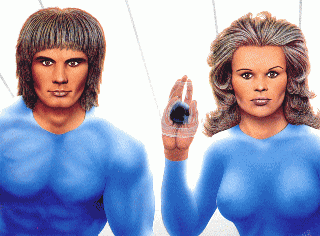
The "medical" exam
Duane remembered Spaulding's promise of a confidential medical examination. Without having notified authorities of Walton's return, Duane drove him to Phoenix, Arizona, late Tuesday morning, where they were to meet with Dr. Lester Steward.[3]:635The Waltons reported that they were disappointed to learn that Steward was not a medical doctor as Spaulding had promised, but a hypnotherapist. Spaulding and Steward would later report that the Waltons had stayed with them for over two hours, while the Waltons insist they were at Steward's office for, at most, 45 minutes, most of which was occupied with trying to determine the nature of Steward's qualifications.[3]:635 The precise time spent with Steward would later become an issue in the case.
Walton's return makes the news
By Tuesday afternoon, word of Walton's return had leaked out to the public. Duane took a telephone call from Spaulding, and told Spaulding not to bother the family again. Clark writes that after this telephone call, "Spaulding became a sworn enemy in the case."[3]:663Among the other telephone calls after news of Walton's return was one from Coral Lorenzen of Aerial Phenomena Research Organization (APRO), a civilian UFO research group. She promised Duane that she could arrange an examination for Walton by two medical doctors — general practitioner Joseph Saults and pediatrician Howard Kandell — at Duane's home. Duane agreed, and the exam began at about 3:30 p.m. Tuesday.[3]:636
Clark writes that "between Lorenzen's call and the physicians' examination, another party would enter, and hugely complicate, the story".[3]:636 Lorenzen was telephoned by an employee of the National Enquirer, an American tabloid newspaper known for its sensationalistic tone. The Enquirer employee promised to finance APRO's investigation, in exchange for APRO's "cooperation and access to the Waltons". Since the Enquirer's financial resources were far greater than APRO's, Lorenzen agreed to the arrangement.[3]:363
The medical examination revealed that Walton was essentially in good health, but they did note two unusual features:
- A small red spot at the crease of Walton's right elbow that was consistent with a hypodermic injection, but the doctors also noted that the spot was not near a vein.[3]:636
- Analysis of Walton's urine revealed a lack of ketones. This was unusual, given that if Walton had indeed been gone for five days with little or no food as he insisted (and as his weight loss suggested), his body should have begun breaking down fats in order to survive, and this should have led to very high levels of ketone in his urine. Critics would argue this inconsistency is evidence against Walton's story.[3]:636
Walton in the UFO
Walton reported that after approaching the UFO near the work site, the last thing he remembered was being struck by the beam of light. When he woke, Walton said he was on a reclined bed. A bright light shone above him, and the air was heavy and wet. He was in pain, and had some trouble breathing, but his first thought was that he was in a normal hospital.[citation needed]
As his faculties returned, Walton says he realized he was surrounded by three figures, each wearing a sort of orange jumpsuit. The figures were not human. Walton described the beings as typical of the so-called Greys which feature in some abduction accounts: "shorter than five feet, and they had bald heads, no hair. Their heads were domed, very large. They looked like fetuses [...] They had large eyes — enormous eyes — almost all brown, without much white in them. The creepiest thing about them were those eyes … they just stared through me." Their ears, noses and mouths "seemed real small, maybe just because their eyes were so huge."[3]:646
Walton related that he feared for his safety and got to his feet, and shouted at the creatures to stay away. He grabbed a glasslike cylinder from a nearby shelf and tried to break its tip to create a makeshift knife, but found the object unbreakable, so instead waved it at the creatures as a weapon. The trio of creatures left him in the room.[citation needed]
Matheson finds this portion of the narrative troublingly inconsistent, noting that "despite his 'weakened' condition, 'aching body' and 'splitting pain in his skull', maladies [sic] for which no cause is suggested, he has no trouble jumping up from his operating table, seizing a conveniently placed glasslike rod, and, assuming a karate 'fighting stance', frightened them with this display of macho aggression, enough at least to cause them to run away."[9]:110
Walton then left the "exam room" via a hallway, which led to a spherical room with only a high-backed chair placed in the center of the room. Though he was afraid there might be someone seated in the chair, Walton says he walked towards it. As he did, lights began to appear in the room. The chair was empty, so Walton says he sat in it. When he did, the room was filled with lights, similar to stars projected on a round planetarium ceiling.[citation needed]
The chair was equipped on the left arm with a single short thick lever with an oddly shaped molded handle atop some dark brown material. On the right arm, there was an illuminated, lime-green screen about five inches square with black lines intersected at all angles.[10]
When Walton pushed the lever, he reported that the stars rotated around him slowly. When he released the lever, the stars remained at their new position. He decided to stop manipulating the lever, since he had no idea what it might do.[citation needed]
He left the chair, and the stars disappeared. Walton thought he had seen a rectangular outline on the rounded wall — perhaps a door — and went to look for it.[citation needed]
Just then, Walton heard a sound behind him. He turned, expecting more of the short, large eyed creatures, but was pleasantly surprised to see a tall human figure wearing blue coveralls with a glassy helmet. At the time, Walton said, he did not realize how odd the man's eyes were: larger than normal, and a bright gold color.[citation needed]
Walton says he then asked the man a number of questions, but the man only grinned and motioned for Walton to follow him. Walton also said that because of the man's helmet he might have been unable to hear him, so he followed the man down a hallway which led to a door and a steep ramp down to a large room Walton described as similar to an aircraft hangar. Walton says he realized he had just left a disc-shaped craft similar to the one he had seen in the forest just before he had been struck by the bluish light, but the craft was perhaps twice as large.[citation needed]
In the hangar-like room, Walton reported seeing other disc-shaped craft. The man led him to another room, containing three more humans — a woman and two men — resembling the helmeted man. These people did not wear helmets, so Walton says he began asking questions of them. They responded with the same dull grin, and led him by his arm to a small table.[citation needed]
Once he was seated on the table, Walton says he realized the woman held a device like an oxygen mask, which she placed on his face. Before he could fight back, Walton says he passed out.[citation needed]
When he woke again, Walton says he was outside the gas station in Heber, Arizona. One of the disc-shaped craft was hovering just above the highway. After a moment, the craft shot away, and Walton stumbled to the telephones and called his brother-in-law, Grant Neff. He thought that only a few hours had passed.[citation needed]
After hearing Walton's story, Gillespie speculated that Walton may have been hit on the head and drugged, then taken to a normal hospital where he had confused the details of a routine exam with something more spectacular. Walton dismissed this, noting that the medical examination had found no trace of head trauma or drugs in his system. Walton told Sheriff Gillespie that he was willing to take a polygraph, a truth serum, or undergo hypnosis to support his account. Gillespie said that a polygraph would suffice, and he promised to arrange one in secret to avoid the growing media circus.[citation needed]
Duane and Travis then drove to Scottsdale, Arizona, where a meeting with APRO consultant James A. Harder had been arranged. Harder hypnotized Walton, hoping to uncover more details of the missing five days. Clark writes that "Unlike many other abductees, however, Walton's conscious recall and unconscious 'memory' were the same, and he could account for only a maximum of two hours, and perhaps less, of his missing five days. Curiously … Walton encountered an impenetrable mental block and expressed the view that he would 'die' if the regression continued."[3]:637
Suppressed polygraph exam and controversy
In the meantime, Spaulding had announced to the press that he and "Dr." Steward had questioned Walton for two hours, and had uncovered inconsistencies in Walton's account that would "Blow this story out".[3]:637 The Phoenix Gazette ran a story about Steward, who related his claims that the "Waltons fear exposure" of a carefully crafted lie.[3]:638Sheriff Gillespie arranged for a polygraph, but when word of the exam was leaked to the press, Duane canceled it, thinking that Gillespie had broken his promise to keep the test a secret. Gillespie would later insist he had not leaked word of the polygraph, and that the case had become too sensationalistic to keep anything secret for long.[citation needed]
The National Enquirer wanted Walton to take a polygraph as soon as possible, and arranged for one, after Duane insisted that he and Walton have the power to veto any public disclosure of the test results. Harder thought that Walton was too distraught to take a polygraph, but the examiner — John J McCarthy, of the Arizona Polygraph Laboratory — said he could take Walton's nervous state into consideration.[citation needed]
In interviewing Walton before the exam began, McCarthy extracted two admissions from him: First, that he had smoked marijuana a few times, but had never used the drug regularly, and secondly, that he and Mike Rogers' younger brother had committed check fraud a few years earlier by altering payroll checks. It was his only serious brush with the law – Walton completed two years probation without further incident – but Walton remained deeply embarrassed about the check fraud episode. (Incidentally, Philip J. Klass notes that Walton once claimed to have been jailed for this crime, though he actually received two years' probation as a first-time offender.)[11]
McCarthy then administered the polygraph, which remains mired in controversy. Walton asserts McCarthy behaved unprofessionally, while McCarthy insists Walton both failed the polygraph and tried to cheat. At one point, says Walton, McCarthy asked if Walton had "colluded" with anyone to perpetrate a hoax. Walton said he was unfamiliar with the word, and Walton reported that McCarthy replied, in a confrontational and aggressive manner, that collusion was planning or conspiring with another, just as Walton had colluded to steal and forge payroll checks.[citation needed]
After completing the exam, McCarthy determined that Walton was lying. Clark quotes from McCarthy's official report: "Based on his reaction on all charts, it is the opinion of this examiner that Walton, in concert with others, is attempting to perpetrate a UFO hoax, and that he has not been on any spacecraft".[3]:640 Later, McCarthy would assert that "sometimes Travis would hold his breath, in an effort to 'beat the machine'."[5]
The Waltons, APRO and The National Enquirer then agreed to keep the results of this polygraph a secret, due in large part, they insisted, to doubts about McCarthy's methods and objectivity. Eight months later, when word of this decision was made public, there would be more charges of deception and cover-up. Walton would later take and pass two additional polygraph exams, though the suppressed results of the first exam would shadow him and earn mention in nearly every discussion of the case to the present.[citation needed]
Once word of the suppressed polygraph was made public by Klass, many who had thought Walton had related a true account (or at least what he thought was a true account) reconsidered the case with a more skeptical eye. Walton, Duane and APRO members argued that McCarthy was biased, and had asked Walton embarrassing, irrelevant questions in an effort to create turbulent conditions more likely to produce a negative result. According to Clark,[12] the opinions of recognized polygraph experts were divided about the propriety of McCarthy's exam: Harry Reed supported the validity of McCarthy's exam, while psychologist David Raskin of the University of Utah asserted that McCarthy's method was "more than 30 years out of date."[citation needed]
Philip J. Klass — an aviation journalist by profession, but also a well-known UFO debunker — launched a concerted, sustained critique against Walton's claims, arguing especially that there was a strong financial motive to the entire affair. Rogers knew he would be unable to complete his contract with the Forest Service, argued Klass, and concocted a scheme to invoke the contract's act of God clause, thus dissolving the contract without fault.[5] Others argued against this idea,[3] noting that defaulting on a Forest Service contract was not necessarily the catastrophe Klass implied: Rogers had failed to complete two of his many earlier Forest Service contracts, yet had been rehired without apparent prejudice. Furthermore, despite his anxiety over the contract, Rogers never invoked or tried to invoke the "act of God" clause in the aftermath of Walton's disappearance.[5]
Klass and others also noted that The UFO Incident was broadcast on NBC just a few weeks before Walton's disappearance. This made-for-television film was a fictionalized account of the Hill Abduction, the first widely publicized case of alien abduction. Klass and others speculated that Walton had been inspired by the program.[5] Walton denied that he had watched the program, but Klass notes that Mike Rogers watched at least a portion of the program. Clark argues that Walton's account of his time on the UFO is quite different from the Hill account, and that furthermore, "there is not a great deal of similarity between Walton's and any other abduction narrative" publicly discussed as of November, 1975.[3]:649
Aftermath
In 1978, Walton published The Walton Experience, in which he outlined his own narrative of the event and its aftermath. The same year, Bill Barry published The Ultimate Encounter, in which he argues that the various debunkers, especially Klass, did not make persuasive cases and that Walton and others alleging similar experiences related events more or less as they believed they had happened.Matheson argues that Walton's book makes a few fundamental errors that severely harm his case. While Walton "proclaims self-righteously" that he intends only to relate events and not "interpret" them, Matheson writes, "the reader will see almost immediately that large sections of the book are nothing more than highly speculative, purely imaginative recreations on his part".[9]:109 For example, after he is knocked unconscious by the blue beam, Walton offers precise, novelistic dialogue describing the conversations of his fellow crew workers after they drove away in a panic. Yet Walton never mentions whether he is paraphrasing their words based on what they related to him, if he interviewed the others to determine who said what, or if he simply assumed what they said. Matheson argues that this represents a "lack of concern for literal accuracy that the reader cannot help but suspect is characteristic of the entire work".[9]:110
After the initial furor subsided, Walton remained in Snowflake and eventually became the foreman at a lumber mill; he married Dana Rogers and they had several children. Beyond the film based on his encounter, Walton has occasionally appeared at UFO conventions or on television specials.[citation needed]
Fire in the Sky
In 1993, Walton's book was adapted into a film, Fire in the Sky, directed by Robert Lieberman and starring D. B. Sweeney as Travis Walton, Robert Patrick as Mike Rogers and Scott MacDonald as Walton's brother Dan Walton. Clark writes that the film found "Moderate success, mixed reviews, and ufologists' complaints about its inaccuracies and exaggerations."[3]:650 Especially inaccurate was the portion of the film detailing his time on the UFO; it bears almost no resemblance to the original narrative. Screenwriter Tracy Tormé even sent letters to many ufologists, claiming that the changes were requested by studio officials, and apologizing for making such substantial alterations to Walton's narrative. (Randles and Hough, 188)Walton and Mike Rogers made a few promotional appearances to support the film; they debated Klass on Larry King Live. At one point, Klass lost his temper and called Rogers a "goddamned liar."[3]:650 In his book, Clark does not offer any background context to explain Klass's remark on Larry King Live.
In the renewed publicity generated by the motion picture, Walton, Mike Rogers and Allen Dallis agreed to take polygraph examinations at the behest of "a skeptical ufologist, Jerry Black".[3]:650 Again, the tests were conducted by Cy Gilson, and the men all asserted that the events as they related them were true. Gilson concluded that all three men were truthful in regard to their responses about the events of November 5, 1975.[citation needed]
At the time of the film's release, Walton re-issued The Walton Experience under the same title as the film; expanding it to include text rebutting Klass's commentary.
See also
Pascagoula,Mississippi - October 11th,1973:
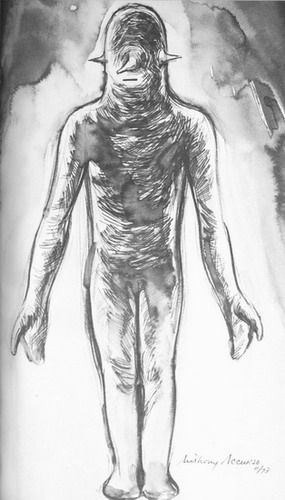
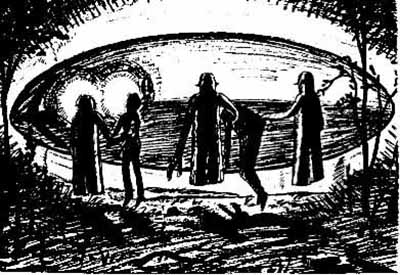
Pascagoula Abduction
From Wikipedia, the free encyclopedia
| Charles Hickson, Calvin Parker |
|
|---|---|
| Alleged abduction | |
| Status | Single Abductees |
| First abduction date | October 11, 1973 |
| Location | Pascagoula River, Mississippi |
| Taken from | Abandoned industrial site |
| Media | |
| Book | Mendez William (1983), UFO Contact at Pascagoula, ISBN 0-9608558-6-6 |
Contents
The UFO Encounter
On the evening of October 11, 1973, 42-year-old Charles Hickson and 19-year-old Calvin Parker — co-workers at a shipyard — were fishing off a pier on the west bank of the Pascagoula River in Mississippi. They heard a whirring/whizzing sound, saw two flashing blue lights, and reported that an oval shaped "craft", some 8 feet across and 8 or more feet high, suddenly appeared near them.[1] The ship seemed to levitate about 2 feet above the ground.A door opened on the ship, they said, and three creatures emerged and seized the men, floating or levitating them into the craft. Both men reported being paralyzed and numb. Parker claimed that he had fainted due to fright. They described the terrifying creatures as being roughly humanoid in shape, and standing about five feet tall. The creatures' skin was pale in color and wrinkled, and they had no eyes that the men could discern, and slits for mouths. Their heads also appeared connected directly to their shoulders, with no discernible neck. There were three "carrot-like" growths instead - one where the nose would be on a human, the other two where ears would normally be. The beings had lobster-like claws at the ends of their arms, and they seemed to have only one leg (Hickson later described the creatures' lower bodies looking as if their legs were fused together) ending in elephant-like feet. Hickson also reported that the creatures moved in mechanical, robotic ways.
On the ship, Hickson claimed that he was somehow levitated or hovered a few feet above the floor of the craft, and was examined by what looked like a large football-shaped mechanical eye, about 6 to 8 inches in diameter, that seemed to scan his body. Parker claimed that he could not recall what had happened to him inside the craft, although later, during sessions of hypnotic regression he offered some hazy details. The men were released after about 20 minutes and the creatures levitated them, with Hickson's feet dragging along the ground, back to their original positions on the river bank.
In a later interview over 20 years after the initial incident, Parker's story became much more elaborate. Here Parker confessed to lying about fainting in sight of the creatures. He claimed that he was in fact conscious when the creatures took him on board the craft and led him into a room at the other end of a hallway to the left of the craft's entrance. He claims he was laid down on a sloped table and examined by a 'petite,' evidently female, being. Though he was paralyzed, he was able to observe the being inject a needle into the base of the underside of his penis. The being later communicated with him telepathically, suggesting that he had been taken for a reason. While he was not able to define it, Parker felt a sense of imminent harm. Nevertheless, he was led back outside the craft and deposited back into his original position unharmed. He then claimed that 19 years later, he came in contact with the same craft again. This time he voluntarily walked aboard the craft and met with the same female being that had examined his body in 1973. He claimed he had a conversation with the being, in English, in which she communicated to him a religious message. She informed him that they shared the same God, that the bible was an authentic text, and that her species wanted to live on earth but could not due to humanity's tendency towards war and destruction.[2]
Hickson and Parker contact police
Both men said they were terrified by what had happened. They claimed to have sat in a car for about 45 minutes, trying to calm themselves. Hickson drank some whiskey. After some discussion, they tried to report their story to officials at Keesler Air Force Base, but personnel told them the United States Air Force had nothing to do with UFO reports (Project Blue Book had been discontinued about four years before), and suggested the men notify police.At about 10:30 p.m., Hickson and Parker arrived at the Jackson County, Mississippi Sheriff's office. They brought the catfish they'd caught while fishing; it was the only proof they had to back up their story. Sheriff Fred Diamond thought the men seemed sincere and genuinely frightened and he thought Parker was especially disturbed. Diamond harbored some doubt about the fantastic story, however, due in part to Hickson's admitted whiskey consumption.
The "Secret Tape"
Diamond interviewed the men, who related their story. After repeated questioning, Diamond left the two men alone in a room that was, unknown to Hickson or Parker, rigged with a hidden microphone.As Jerome Clark, writes, "Sheriff Diamond assumed that if they were lying, that fact would become immediately apparent when the two spoke privately. Instead, they continued to talk in the voices of the terribly distressed." (Clark, 447) This so-called "secret tape" was held on file at the Jackson County Sheriff's department, and has since earned wider circulation amongst UFO researchers and enthusiasts.[3] Parker, who seemed particularly shaken, spoke repeatedly of his wish to see a doctor. A partial transcript of their interrogation and of the "secret tape" is available;[4] immediately below is part of the conversation on the "secret tape", as transcribed by NICAP:
- CALVIN: I got to get home and get to bed or get some nerve pills or see the doctor or something. I can't stand it. I'm about to go half crazy.
- CHARLIE: I tell you, when we're through, I'll get you something to settle you down so you can get some damn sleep.
- CALVIN: I can't sleep yet like it is. I'm just damn near crazy.
- CHARLIE: Well, Calvin, when they brought you out-when they brought me out of that thing, goddamn it I like to never in hell got you straightened out.
- His voice rising, Calvin said, "My damn arms, my arms, I remember they just froze up and I couldn't move. Just like I stepped on a damn rattlesnake."
- "They didn't do me that way", sighed Charlie.
- Now both men were talking as if to themselves.
- CALVIN: I passed out. I expect I never passed out in my whole life.
- CHARLIE: I've never seen nothin' like that before in my life. You can't make people believe-
- CALVIN: I don't want to keep sittin' here. I want to see a doctor-
- CHARLIE: They better wake up and start believin'... they better start believin'.
- CALVIN: You see how that damn door come right up?
- CHARLIE: I don't know how it opened, son. I don't know.
- CALVIN: It just laid up and just like that those son' bitches-just like that they come out.
- CHARLIE: I know. You can't believe it. You can't make people believe it-
- CALVIN: I paralyzed right then. I couldn't move-
- CHARLIE: They won't believe it. They gonna believe it one of these days. Might be too late. I knew all along they was people from other worlds up there. I knew all along. I never thought it would happen to me.
- CALVIN: You know yourself I don't drink
- CHARLIE: I know that, son. When I get to the house I'm gonna get me another drink, make me sleep. Look, what we sittin' around for. I gotta go tell Blanche... what we waitin' for?
- CALVIN (panicky): I gotta go to the house. I'm gettin' sick. I gotta get out of here.
- Then Charlie got up and left the room, and Calvin was alone.
- CALVIN: It's hard to believe . . . Oh God, it's awful... I know there's a God up there...
Publicity
Hickson and Parker returned to work the day after the encounter (Friday, October 12). They did not initially discuss their purported UFO encounter, but coworkers noted that Parker seemed very anxious and preoccupied. Within hours, Sheriff Diamond telephoned the men at work, stating that news reporters were swarming in his office, seeking more information about the UFO story. An angry Hickson accused Diamond of breaking his confidentiality pledge, but Diamond insisted he had not done so, and that the case was too sensational to keep quiet.Hickson's foreman overheard Hickson's side of the conversation, and asked what had occurred. Hickson related his story to the foreman and to shipyard owner Johnny Walker. After hearing the tale, Walker suggested that Hickson and Parker contact Joe Colingo, a locally prominent attorney (who was Walker's brother-in-law and also represented the shipyard).
Colingo met the men, and, during their conversation, Hickson expressed fears about having been exposed to radiation. Colingo and detective Tom Huntley then took Parker and Hickson to a local hospital, which lacked the facilities for a radiation test. (Clark's book does not make clear if Huntley is a police detective or a private detective.)
From the hospital, the men went to Keesler Air Force Base, where they were examined extensively by several doctors. Afterward, reported Huntley, Parker and Hickson were interviewed by the military intelligence chief of the base, with the "whole base command" observing the proceedings. (Clark, 448)
Colingo drew up a contract to represent Hickson and Parker. However, nothing came of this, and Hickson would later have nothing to do with Colingo, charging the lawyer with base financial motivations: Colingo, said Hickson, "just wanted to make a buck." (Clark, 449)
Within days, Pascagoula was the center of an international news story, with reporters swarming the town. Professor James A. Harder (a U.C. Berkeley engineering professor and APRO member) and Dr. J. Allen Hynek (an astronomer formerly with Project Blue Book) both arrived and interviewed Parker and Hickson. Harder tried to hypnotize the men, but they were too anxious and distracted for the procedure to work—Parker especially so. Hynek withheld ultimate judgment on the case, but did announce that, in his judgment, Hickson and Parker were honest men who seemed genuinely distressed about what had occurred.
Tiring of the publicity, Hickson and Parker went to Jones County, Mississippi (about 150 miles north of Pascagoula), where both men hoped to find relief with family members. Parker was eventually hospitalized for what Clark describes as "an emotional breakdown." (Clark, 449)
In an interview several years after the claimed UFO event, Hickson speculated that Parker fared worse after the encounter because he had never previously experienced a profoundly frightening ordeal. While Hickson described the UFO encounter as the most terrifying event in his life, he also noted that he had seen combat in the Korean War, and that he thus had some familiarity with a terrifying experience. The younger Parker, on the other hand, had never suffered through a terrifying encounter, let alone a bizarre confrontation with something that was not even supposed to exist.
On September 9, 2011, Charles Hickson died at age 80, but never backed off the alien abduction story despite ridicule.[5]
Polygraph
As noted above, both Parker and Hickson volunteered to take polygraph exams to prove their stories. In the end, only Hickson did so, and the examiner determined that Hickson believed the story about the UFO abduction.Aviation journalist and UFO skeptic Philip J. Klass argued that there was reason to question the reliability of Hickson's lie detector exam, writing,
- The polygraph test was given to Hickson by a young operator, just out of school, who had not completed his formal training, who had not been certified by his own school and who had not taken a state licensing examination. Furthermore, that the lawyer for Hickson and Parker - who also was acting as their "booking agent" - had turned down the chance to have his clients tested WITHOUT CHARGE by the very experienced Capt. Charles Wimberly, chief polygraph operator from the nearby Mobile Police Dept. Also, that the lawyer did not contact other experienced polygraph operators close to Pascagoula. Instead, the lawyer had imported from New Orleans - more than 100 miles away - the young, inexperienced, uncertified, unlicensed operator who, by a curious coincidence, worked for a friend of the lawyer![6]
Aftermath
In 2001, retired navy chief petty officer Mike Cataldo revealed that he observed an unusual craft at dusk on the same date. While travelling with crew mates Ted Peralta and Mack Hanna on U.S. Route 90 from Pascagoula to Ocean Springs, an object like a large tambourine with small flashing lights approached from the northwest and crossed the freeway, before hovering over the treeline and disappearing. As he approached his home in St Andrews, Ocean Springs, the craft made a second appearance at lower altitude.[8]
See also
List of UFO sightigsVarginha,Brazil - January 20, 1996
Varginha UFO incident
From Wikipedia, the free encyclopedia

The Brazilian government has officially denied any claims of being involved in the capture of EBE's, but some theorists claim otherwise, accusing the government of a cover up. For some the lack of reliable sources is evidence against its actuality; the testimony of unnamed, anonymous "official" individuals are frequently featured.
UFO investigator Kevin D. Randle writes that "this case is as complicated as any other in the UFO field." [1] Randle notes that there is a lack of physical evidence supporting the case, and adds, "In fact, we have been unable to verify much of anything." [2]
Contents
Overview
According to media reports, the creature was first sighted by three women ranging from 14 to 21 years old: sisters Liliane and Valquíria Fátima Silva, and their friend Kátia Andrade Xavier. They allegedly saw the creature in the afternoon of January 20, 1996: A biped about 1.6 metres (5 ft), with a large head and very thin body, with V-shaped feet, brown skin, and large red eyes. It seemed to be wobbly or unsteady, and the girls assumed it was injured or sick. The creature was said to have a strong, unpleasant odor.[citation needed] Witnesses[who?] have noted physical similarities between this alleged creature and the chupacabra, a cryptozoological creature reported in Puerto Rico and Central America.The Silva sisters say they fled, then told their mother that they had seen the devil. She didn’t believe them at first, but when she went to the area where they had allegedly seen the creature and smelled a strong ammonia-like odor, her opinion changed. After relating their tale to family and friends, rumors began to spread throughout the city: UFOs were sighted, aliens were captured. Two days later, another creature was allegedly found lying along a road. Three military trucks were sent to retrieve it. It was captured by S2 officials (Brazil's military intelligence), and sent to a hospital to be examined.[citation needed] l As related by Moffett in the Wall Street Journal, "The army finds itself besieged on several fronts. A local mystic predicts that Varginha will suffer some kind of cataclysm this September as retribution for its blitzkrieg on the interplanetary visitors. An armed-forces news conference marking 'Victory Day' in World War II degenerated into a shouting match between a general and a television reporter pressing him about the extraterrestrials. An official briefing to debunk UFO conspiracies was overshadowed by an auto mechanic's claim to have seen yet another weird cylindrical aircraft, a cosmic encounter he re-enacted with the aid of an aluminum coffee thermos ... Stanton Friedman, a Canada-based UFO expert, says Varginha has the makings of a 'cosmic Watergate.'"[3]
Brazilian mass media was saturated for some time with speculation, rumors and accounts regarding the UFO's and the strange creatures. A soldier, Marco Eli Cherese, was said to have died under mysterious circumstances related to the UFO affair.[citation needed]
Vitorio Pacaccini, a Brazilian UFO enthusiast, became a central figure in the Varginha affair. He appeared on television, offering testimony he reported was from reliable government officials, which confirmed the events as true. The sources, however, were anonymous, said Pacaccini, and feared reprisal. Randle notes that Pacaccini insists that the first to encounter the strange creature was not the girls, but rather, a group of fire department workers. In the early morning of January 20, according to Pacaccini, four firemen were alerted to a strange animal which had been first spotted by a group of girls, who began throwing rocks at it. They captured the dizzy creature, and whisked it away.[citation needed]
Moffett writes that there have been over half a dozen sightings of the creatures, though "it is unclear how all of these beings could have fit into the minivan-sized spacecraft that was spotted here in January." There was disagreement as to whether one creature had been sighted multiple times, or if several creatures had been sighted individually.[citation needed]
Officials in Varginha denied that anything unusual occurred, but considered dedicating a park to the creatures.[citation needed]
On the other hand, this incident made the city very famous, bringing numerous ET tourists. Now, the UFO tourism has become an important commercial activity of Varginha city. Many "Grey" dolls with famous football team uniforms are on sale in the main streets.[citation needed]
See also
The Zimbabwe School Close Encounter -
September 16th,1994.
The Zimbabwe School Close Encounter
Source: Loy Lawhon, About.com
Original Source
Original Source
http://www.ufoevidence.org/
officials at the Ariel School in Ruwa, Zimbabwe were amazed when
the school's students, aged approximately 5 to 12 years old, reported
that a flying object had landed on the school grounds.
Ruwa, Zimbabwe
September 16, 1994 On the morning of September 16, 1994, teachers and school officials at the Ariel School in Ruwa, Zimbabwe were amazed when the school's students, aged approximately 5 to 12 years old, reported that a flying object had landed on the school grounds. The teachers at the school were in a meeting, so the 62 children were basically unsupervised while in the schoolyard on morning recess. The only available adult seems to have been one of the mothers, who was operating the school tuck shop - a sort of snack bar where candy, snacks and sodas are sold. According to some sources, UFOs had been seen in the skies over Zimbabwe for two days before the incident occurred. Ruwa is about 20 kilometers from Harare, the capitol of Zimbabwe. Ariel School is a private elementary school with students of mixed ethnic heritage. The children said that they had first seen three objects in the sky. These objects would disappear and then reappear in a different location. The objects moved closer and closer to the ground and finally landed in a brushy area adjacent to the schoolyard. This area had not been fully cleared yet and was off-limits to the students. The object landed, or hovered just above the ground, in an area about 100 meters from the students. The children said that a small man, about one meter in height, appeared on top of the object. The little man, who was described as having a scrawny neck, long black hair, and huge eyes, walked a short way across the ground toward the students. When he noticed the children, he vanished and then reappeared at the back of the object. The object then took off and vanished. The smaller children were very frightened and cried for help. They believed that the little man was a demon who would eat them. Black African children have heard legends of tokoloshis, demons who eat children. The children ran to the tuck shop operator, but she did not want to leave the shop unattended and so did not go. The late Cynthia Hind, known as Africa's foremost UFO investigator, investigated the case the next day. When she was first contacted, she asked the headmaster of the school, Colin Mackie, to have the children draw pictures of what they had seen. When she arrived at the school, he had about 35 drawings for her. The drawings were of very similar objects. 'I swear by every hair on my head and the whole Bible that I am telling the truth.' The headmaster affirmed that he believed that the students were telling the truth, and one little girl told Cynthia Hind that, 'I swear by every hair on my head and the whole Bible that I am telling the truth.' Dr. John Mack, the abduction researcher, and his associate Dominique Callimanopulos went to Ruwa and spent two days interviewing and counseling twelve of the children and their parents. "Those thoughts came from the man - the man's eyes." Curiously, the older students said that they felt that the creatures communicated with them somehow, sending the message that we humans are destroying our planet, polluting the environment in ways that will have dire consequences. The Sightings TV show did a report on the Ariel School landing, and CSETI has a RealPlayer video taken from the TV program with actual testimony from the children. |
September 1977; Parkstone, Dorset, UK:62 children witness UFOnaut.
July 13, 1959, Blenheim, New Zealand:
November 2, 1967, Ririe, Idaho:
December 8, 1967; Idaho Falls, ID:
January 1, 1970; Duncan, B.C., Canada:
April 16,1974, Casale Monferrato, Italy:
May 3, 1975, San Antonio, Texas:
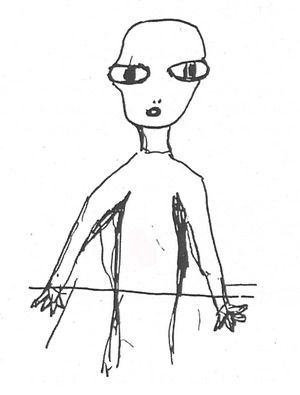

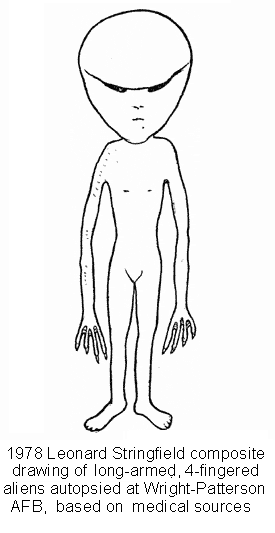








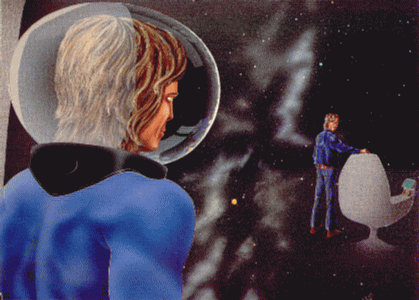



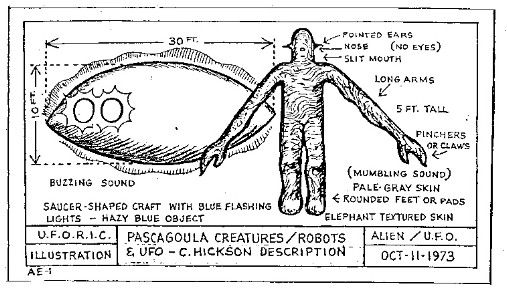

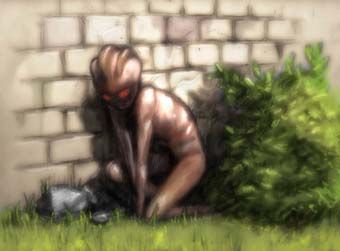
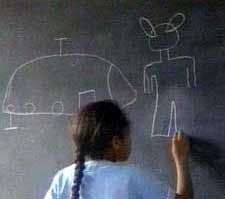

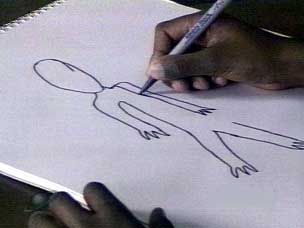
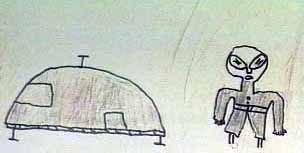
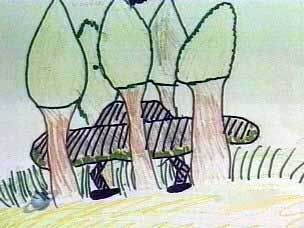
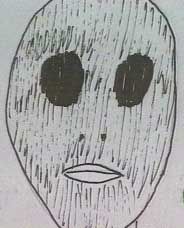
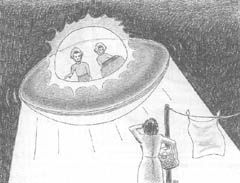
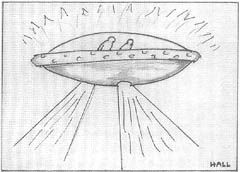

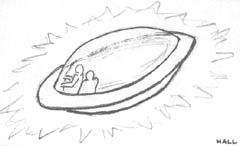
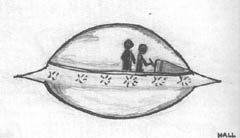
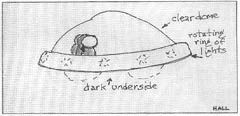
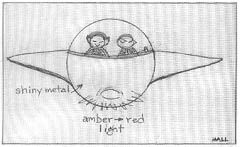
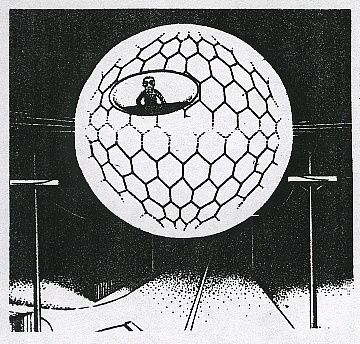
No comments:
Post a Comment